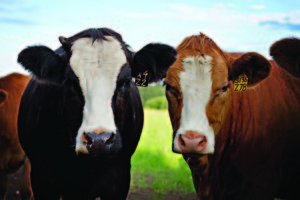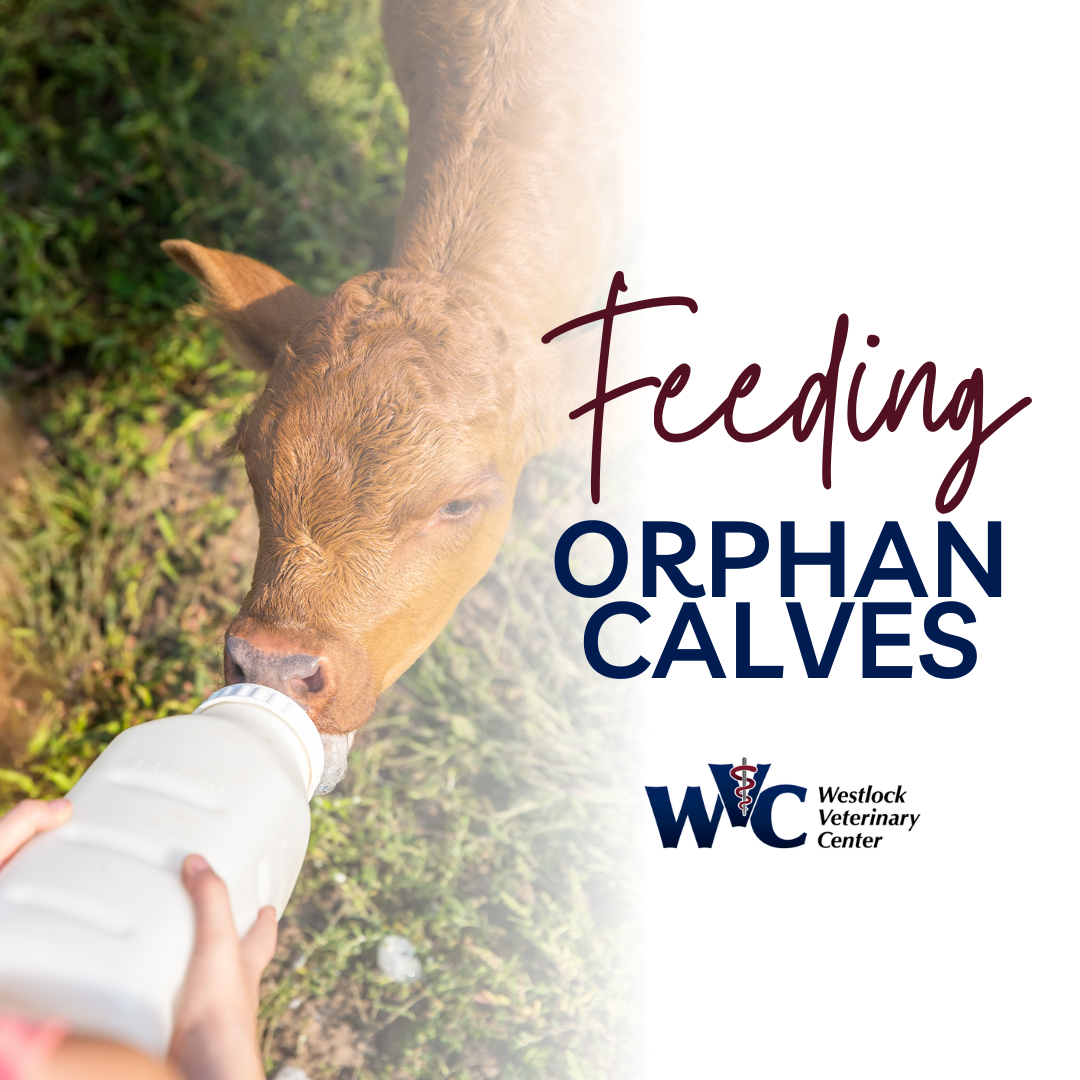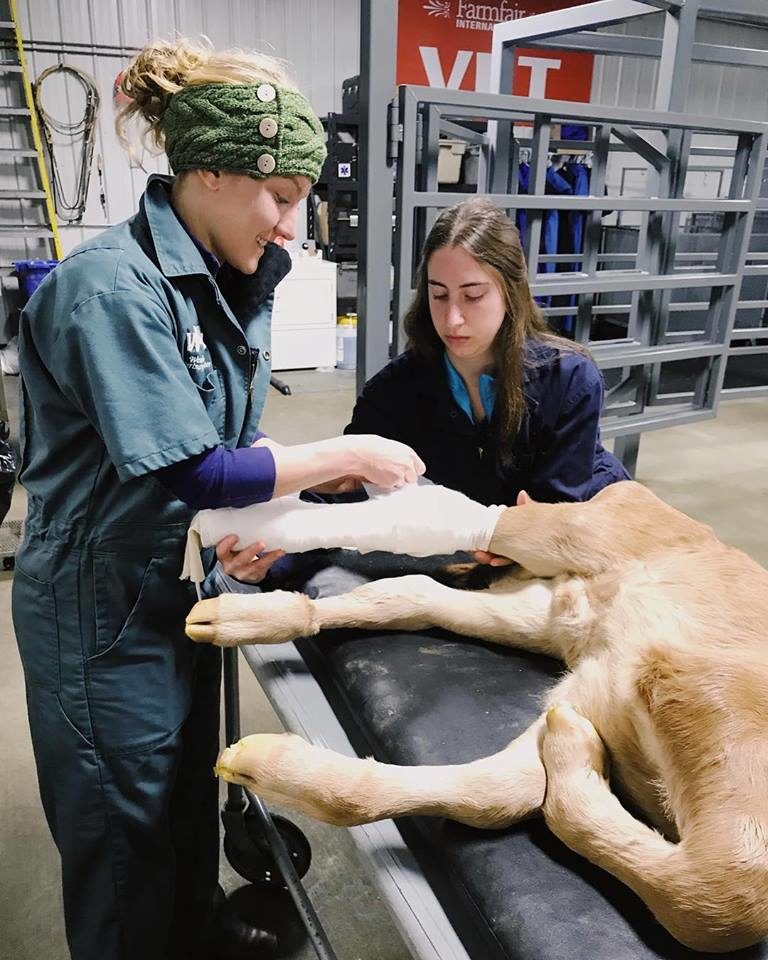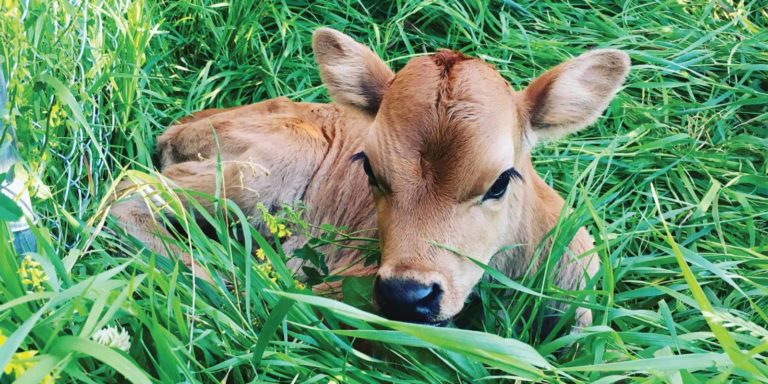Posts Tagged ‘cows’
Feeding Orphan Calves
By: Dr. Collin Lawrence
Whether you have chosen to rear bottle calves purchased from outside sources or are having to feed orphans or excess twins from your herd, there are some important things to consider.
1) Colostrum is always a number 1 priority. The importance and impacts of getting enough colostrum into a calf are critical. Increased risks of navel infections, scours, pneumonia, as well as reduced growth rates and immunity are only a few of the many impacts in the failure of passive transfer.
Timing is critical to ensure adequate intake of colostrum. It is recommended that calves get a minimum of 100-120 grams of immunoglobins (these are the antibodies calves receive from colostrum) in order to achieve adequate passive transfer. Calves are only able to absorb colostrum in their first 24 hours of life however, only a few hours after birth their absorptive capabilities start to diminish and by 12 hours old they can only absorb 50% of what they are fed. Meaning, even though you may provide great quality colostrum, if you delay giving it, they likely will not get enough antibodies to achieve adequate protection. If you do not see a calf up and nursing within the first 2 hours of life, it is probably prudent to get involved and ensure they get what they need. If you are buying calves and are unsure of their colostrum intake, you may want to reconsider purchasing them.
2) Bedding. A well bedded pen for them is very important and a thick layer of straw that they can snuggle into provides both a warm environment and helps reduce exposure to pathogens, especially if multiple calves are houses together.
3) Preventative measures. We recommend all calves receive Vit AD and Selenium at birth. There are a number of injectable or oral products available. As well, intranasal vaccines are a good idea to reduce the risk of respiratory disease affecting these calves in their first months of life. The use of scour prevention products is a bit more complicated as it depends on what pathogens we are trying to protect against (there is no product that protects against everything) and most have to be given in the first hours of life, like colostrum.
4) Feeding. At a minimum, calves should be getting 10% of their body weight in milk each day (10lbs = 1 gallon = 4.5L). However, to achieve better growth rates and health outcomes, many dairy operations are feeding calves closer to 8-10L of milk per day. They should also have full time access to a dairy calf creep and good quality grass hay by a week old. This is critical for rumen development and allows calves to transition easier during weaning, often within 3 months of life.
Normally calves are continually exposed to lactobacillus and other “good bacteria” when they nurse from their mother’s udder. A bottle calf does not have that luxury and without a normal gut flora they have reduced feed efficiency and increased risk of scours. We also have a product to add to their feedings this twice daily in the milk provides a source of these important bacteria.
Calves with Broken Legs
This time of year we see a fair number of calves with broken legs.
Typically the calf is a few days old and gets stepped on by over eager, protective moms.
The good news is, these breaks can heal with a little TLC, especially in young calves with fractures of the lower leg. A broken leg calf, with appropriate care, casting, and monitoring generally has a good prognosis. Although it can depend on the location, a cast is applied, left on for 4 weeks and a positive outcome expected!
If you have further questions on casting calves with broken legs, please give the clinic a call.
780-349-3663
This little guy was only a day old when he fractured his back lower leg.
Thanks Dr.Lewis and RVT Cassandra for getting him on the road to recovery!
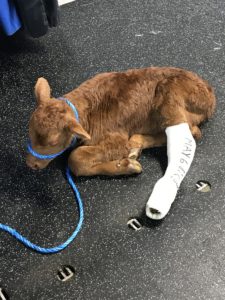
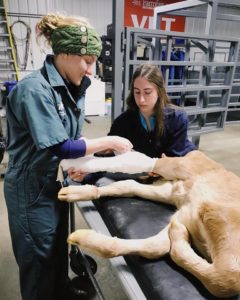
broken leg calf
It’s Calving Season!
CALVING SEASON!
It’s well into calving season now, here is a little refresher on the stages of calving and when to seek help.
Stage 1: Symptoms of restlessness and discomfort, cow may lay down and get up frequently. The teats may become distended and leak milk. During the end of this stage the water bag is presented and will likely break. These conditions will normally be observed for 1-6 hours.
Stage 2: This stage is characterized by the fetus entering the dilated birth canal, rupture of the second water sac and abdominal contractions/labor and the expulsion of the calf. The cow will initiate abdominal contractions once the feet have entered the cervix or vagina.
This may not be observed due to one of the following:
-If the calf is breech (tail first)
-Twin calves who can’t agree who should go first
-Uterine Torsion or Cervical Scarring
Intervention is required if Stage 2 is delayed. Time for Stage 2 for a cow is 30 minutes to 4 Hours. Heifers usually require 4 hours.
Stage 3: The last stage is the expulsion of the placenta and the uterus returning to normal size. This is anywhere from 30 minutes to 8 hours.
Guidelines:
1.Check in intervals of 3 hours
2.Once a heifer/cow is in Stage 2, check frequently
3.Intervene if – stage 1 is over 3 hours, stage 2 is over 2 hours or cow/heifer is trying hard for 30 minutes-1 hour with no progress, – or if they have quit trying for more then 20 minutes.
Seek Professional Advice When:
- You don’t know what you are dealing with
- You know the problem, and the solution but you know you are unable to handle the problem
- You know the problem and the solution but are unable to make any progress in 20 minutes
Fall Preg Checking
Getting ready to bring the herd home?
We are now available on Saturdays for the next couple of weeks to get some extra preg checks in. Call today as these spots always fill up fast!
Keeping your open cows over the winter is the single biggest cost in a cow/calf operation, find your opens to sell today.